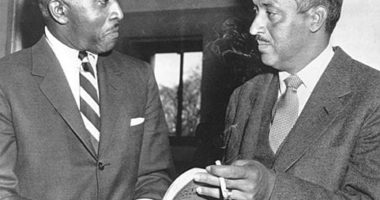The Case for Investing in High-Quality Early Learning
Imagine a preschool classroom where every child is engaged in positive social, emotional, and developmental learning activities. Where children are smiling and happy, enjoying the interaction with their teacher and each other — whether they’re delighting in story time or constructing towering cities with colorful building blocks. Where parents are vigorously engaged in their child’s education while simultaneously seeking opportunities to better their own lives.
As Maryland’s state superintendent of schools, I saw this on a regular basis when visiting one of our Judy Centers. Placed deliberately in Title I schools, Judy Centers are subsidized preschools that bring together children from across neighborhoods and family income brackets for quality early learning and family support.
The power of high-quality early learning has been evidenced in research time and time again: High-quality preschool programs help equip our children with critical early development and opportunities to learn and play together, while putting them on the path to school readiness before their little feet reach the kindergarten door. Indeed, a recent study by the National Bureau of Economic Research showed, yet again, that investment in high-quality preschool, especially when followed by sustained investment in K-12 schools, can help break the cycle of poverty in America.
That’s why it is so encouraging that in states across the country, we have made real progress in broadening access to early learning. According to The National Institute for Early Education Research (NIEER), since 2002, the percentage of 4-year-olds enrolled in publicly funded preschool (including state preschool, Head Start, and federally funded disability preschool programs) has climbed from 31 percent to 43 percent.
That progress has been driven by the convictions of state leaders, the generosity and foresight of business leaders, and the voices and votes of parents and communities. But it has also been the result of federal investment, which unfortunately is now under threat.
In recent years, federal dollars have played an increasingly important role in ensuring that more children have access to high-quality early developmental learning. Indeed, according to NIEER, federal dollars supported half of all new publicly funded preschool seats in 2015. One example of federal investment is the Preschool Development Grant, which was so instrumental in spurring growth, quality, and coordination among providers in states, including Maryland, where it helps fund the Judy Centers, along with other high-quality providers.
Fortunately, leaders in the U.S. Senate and House of Representatives are continuing to recognize the importance of federal investment in early childhood.
Senator Patty Murray of Washington and Representative Bobby Scott of Virginia have just introduced the “Child Care for Working Families Act.” This bill would provide significant funding for states that develop or expand a voluntary, high-quality preschool program.
Importantly, this bill would only allow funding to be invested in early childhood programs that meet the state’s highest standard of quality. It would also raise the bar for teachers in these programs, including requiring the lead teachers to have a bachelor’s degree, which is unfortunately not common enough. It would prompt states to evaluate access to high-quality preschool across the state and distribute resources to address any inequities. And it would ensure states continue their own investment in early childhood education.
Senator Murray — who is a former preschool teacher — and Representative Scott have recognized that there is an important role the federal government can play in improving access and quality for early learning opportunities. Given that high-quality preschool has long been a bipartisan issue, I hope Congress and the administration can find a way to work together to advance this vision.
My experiences with the Judy Centers in Maryland show just how powerful a strong educational start can be for children. Let’s choose to invest in what we know works.
This piece originally appeared in The Hechinger Report.










